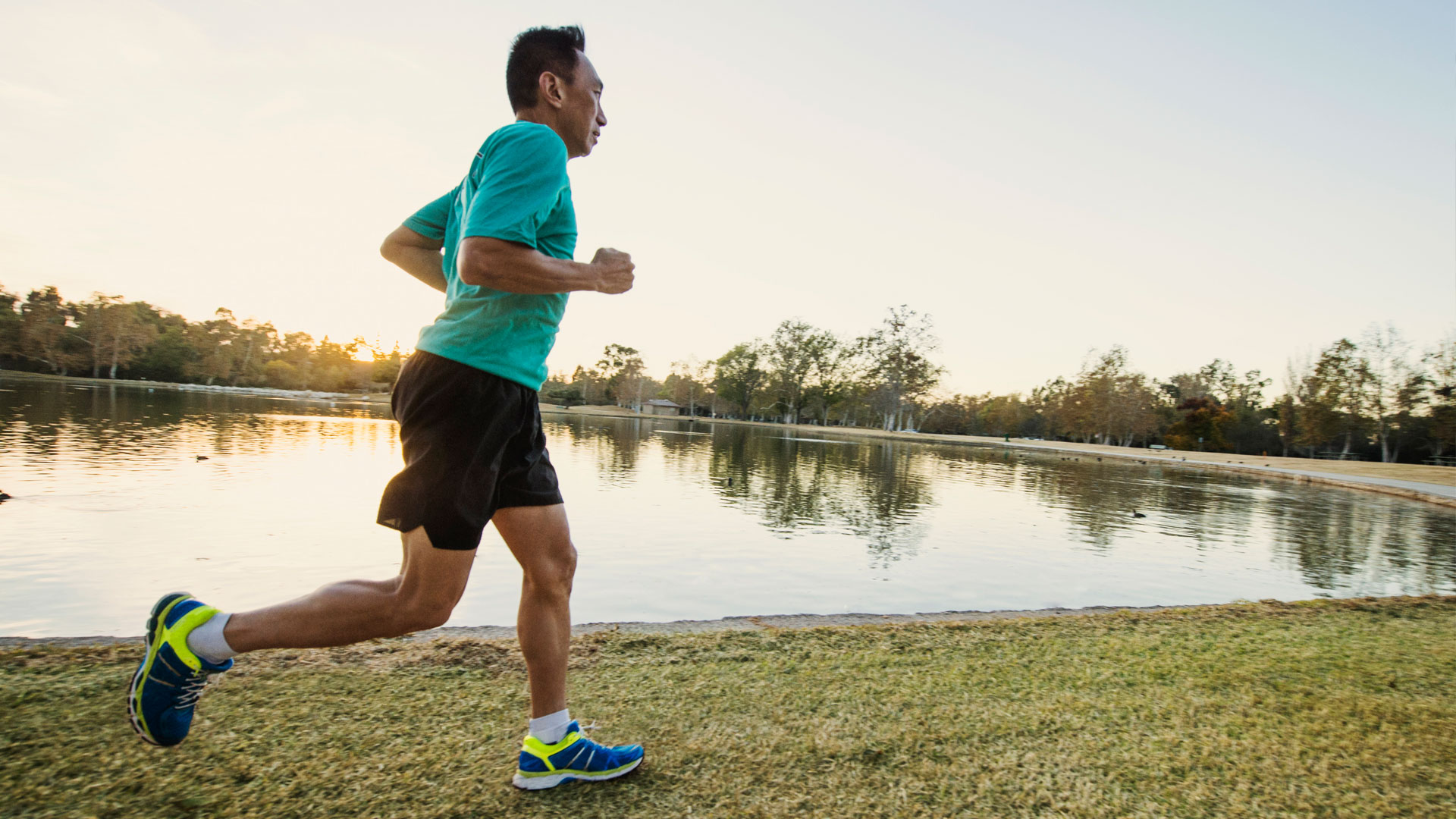Incline walking vs running: which is better for fat loss?
We asked expert trainers if they would recommend incline walking or running for sustainable weight loss


If you’re trying to improve your cardio fitness, you can’t go wrong with incline walking or running. Both types of exercise can get your blood pumping and improve your heart and lung health. They can also boost your metabolism and help you burn calories, which contributes to the all-important calorie deficit you need to lose weight.
Running burns more calories in a short space of time, but it’s not necessarily better for weight loss. As incline walking is a lower-impact activity, you might be able to do it for longer and increase your overall calorie burn.
To dig into the details, I spoke with specialist trainers and looked at the latest research. The good news? Either type of activity is effective, so you can simply pick the one you like.
Does incline walking or running burn more calories?
The amount of calories you burn depends on the intensity of your workout. Typically, higher-intensity workouts like jogging or running burn more energy than low-intensity activities like walking.
This is backed up by numbers from the 2024 Compendium of Physical Activities, a scientific database providing estimates of energy expenditure for different sports.
According to the latest figures, an adult aged 19-59 who weighs 140lbs can expect to burn 310 calories if they run at a speed of 6-6.3 mph for 30 minutes. The same person would burn 177 calories if they walked uphill at a moderate pace on an incline of 1-5% for the same amount of time.
Incline walking can still burn a lot of calories, especially if you work at a faster pace and use a steeper incline. But typically you’d expect running to result in a higher energy expenditure.
Start your week with achievable workout ideas, health tips and wellbeing advice in your inbox.
Incline walking vs running for fat loss
When you’re in a calorie deficit, your body will start drawing energy from its fat reserves, which is how you lose weight. Both running and walking can contribute to a calorie deficit, but which one is better?
Simon Bennett, a strength and conditioning coach and the co-founder of TRI-FIT Athletic, says incline walking offers some surprising fat-burning benefits.
"A fast-paced walk or indeed a walk on an incline will place you into a heart rate zone where the body can utilize fats for energy most effectively," he explains. This simply means that instead of relying primarily on glycogen stores (from food) your body will target your fat stores for energy.
However, it's more important to focus on achieving a calorie deficit if you want to lose fat, so you should choose whichever activity supports this goal.
Portia Boston, a NASM-qualified trainer and coach, agrees: "Any movement that you do consistently has the potential to help you increase your metabolism and burn more calories. It really comes down to what you enjoy doing."

Portia Boston is a NASM-certified personal trainer, Pilates instructor, and certified holistic health coach. She is also the Head Coach at the [solidcore] Pilates studio in Dumbo, New York.
Does incline walking target belly fat?
Incline walking burns calories, elevates your heart rate, and builds muscle. All these things can lead to fat loss, but Boston also explains that it's impossible to direct fat loss to one area of your body with exercise and nutrition alone.
Healthy bodies store fat in different places—some people may have more fat on their bellies, while others store fat in their hips and thighs. The location of fat in your body and where you'll lose it is primarily determined by hormones and genetic makeup.
Since you can't spot-target fat loss from a specific area, focus on techniques to burn energy and boost your metabolism. You can lose weight by walking, but the aim is to move at a moderate pace to increase your heart rate.

Incline walking vs running: which is better for building muscle?
Walking at an incline adds resistance to your workout, recruiting the glutes and quads more than a walk on the flat. The result? A stronger lower body.
"If you were to start on a treadmill, set the incline to its maximum and walk until your legs felt heavy and were unable to continue, then you would be experiencing a build-up of lactic acid. This is the same as when you lift a weight for a number of repetitions until you can no longer move the weight. This is strength training or 'muscle building'," says Bennett.
Running can also help you build lower-body muscle, but you’re more likely to see results if you focus on things like sprinting and hill runs.
"If you sprint until you have to slow down, that would constitute a form of building muscle. This is because you're using your muscles for a short period of time at a high intensity, much like lifting a weight for a number of reps at a similar effort," says Bennett.
The most efficient way to build muscle is through targeted strength training. If you’re looking to put on mass, try focusing on routines like this dumbbell leg workout.
Is incline walking easier on the joints than running?
Incline walking boosts both strength and endurance without placing stress on the joints, making it an excellent option for anyone with fussy knees. As it strengthens the muscles surrounding the knee (the quads and hamstrings) it’s also a good way of ensuring you have adequate strength to support the joint.
"If you have joint issues, running can be very tough just because it's naturally high impact," says Boston. "Walking is much more low impact, whether at an incline or flat. It's a little bit easier on the joints but still provides the benefits you get from jogging."
Running carries injury risk because while one foot is off the ground, the other one (and the leg) is supporting your entire body weight during the impact of landing. This puts more stress on the knees and joints and a higher risk of a fall.
Incline walking vs running: which is easier?
Running typically demands more energy, which means it’s more likely to leave you out of breath and feeling exhausted. Incline walking is low impact, which means it’s kinder on the joints and a better option for anyone with knee issues.
Does that mean incline walking is easier? Not exactly. If you really ramp up the incline on a treadmill while walking, you’ll soon start to feel your leg muscles burn. This isn’t a bad thing—it means you're improving your strength and endurance—but it shows that you can adapt either activity to be more or less challenging.

Incline walking vs running: which is cheaper?
Both sports can be low cost, all you need to do is strap on a pair of sneakers and head outside. However, unless you live near a very big hill you might find it hard to do a lengthy incline walk. You’ll likely want to invest in a home treadmill or a gym membership if you want to do something like the trendy 12-3-30 walking workout.
Bennett says: "Investing in a decent pair of walking or running shoes is also important. If you can also stretch to a fitness tracker, then that way you can track distance/calories and other metrics to improve on and give you the motivation to push that little bit harder."
Incline walking vs running: what are the overall benefits?
"All exercise has benefits," says Bennett. “There are the immediate physical benefits such as reducing your risk of chronic illnesses like osteoarthritis, and heart disease, but there are also great mental health benefits, too.
"When you perform each of these types of exercise, you'll release a chemical in the body called endorphins that trigger a positive feeling.
"You might not experience it at the time but shortly after you've completed your exercise you will. Your energy levels will also be elevated as you'll be improving your fitness throughout your exercise journey."
Maddy Biddulph is a journalist specializing in fitness, health and wellbeing content, with 26 years in consumer media working as a writer and editor for some of the bestselling newspapers, magazines and websites in the US and UK, including Marie Claire, The Sunday Times and Women’s Health UK.
She is a CIMPSA-certified PT and works one-on-one with clients, as well as running Circuits Club classes which mixes cardio and strength training and chair-based exercise classes for seniors.
